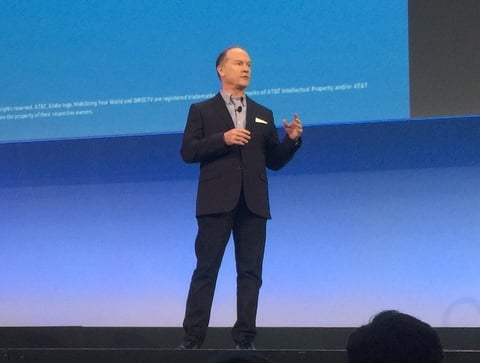AT&T’s newly expanded capex budget will focus on enhancing its fiber network to serve its ongoing FTTH and emerging 5G network deployments—two of the telco’s largest network initiatives for 2018.
John Donovan, CEO of AT&T Communications, told investors at the Morgan Stanley Technology, Media and Telecom Conference that fiber will be a big part of the capex equation in 2018.

“If you look at where we are, we’re going to make sure we have enough capacity to keep all the networks we have running and in good shape,” Donovan said. “Once we take care of capacity, we focus on footprint.”
RELATED: AT&T’s capex to rise to $25B in 2018—from just $21.6B in 2017—on tax reform, FirstNet
Donovan added that “with the fiber footprint we expect to get to another 3 million homes this year.”
In January, AT&T told investors during a conference that it expects to spend up to $25 billion this year in capital expenses, surpassing Wall Street estimates. AT&T said the increase—from around $21.6 billion in 2017—is partly due to the recently passed tax reform as well as its FirstNet efforts. The company said its capital expenditures, including capitalized interest, totaled $21.6 billion in 2017, which was down slightly from the $22.4 billion the company spent in 2016.
But FTTH is only one part of AT&T’s fiber expansion equation. As the service provider moves forward with its 5G plans, AT&T will be required to deploy more fiber to backhaul traffic from small cell sites.
“A lot of the business case on 5G is going to be how dense is your fiber network?” Donovan said. “The bigger expense tends to be monthly opex on the fiber, the hanging locations and the rights of way.”
AT&T’s fiber moves for 5G and FTTH will be music to the ears of network construction companies like Dycom, which counts the telco as its largest customer. As of the end of its second quarter of 2018, Dycom reported that AT&T made up 22.4% of its revenue.
“The way we think about 5G, there's an element to the 5G technology, which requires massive fiber densification,” said Steve Nielsen, CEO of Dycom, during the earnings call, according to a Seeking Alpha transcript. “We have a number of customers that are either doing it on their own behalf or on behalf of wireless carriers that are extending fiber to increase the density of a network and increase small cell capacity. And I think all wireline customers that we have over time will be supporting the effort depending on the footprint and the wireless carriers that's deploying 5G.”
Nielsen added that Dycom is also keen on helping its wireless operator carriers achieve their small cell initiatives.
“I think the second element of 5G, of course, is deploying it across the actual small cell antennas that are attached to that fiber, and once again we're doing that for a number of customers today,” Nielsen said. “We think that that small cell deployment, in support of densification, both for LT, 4G LTE and 5G, will continue to increase.”
